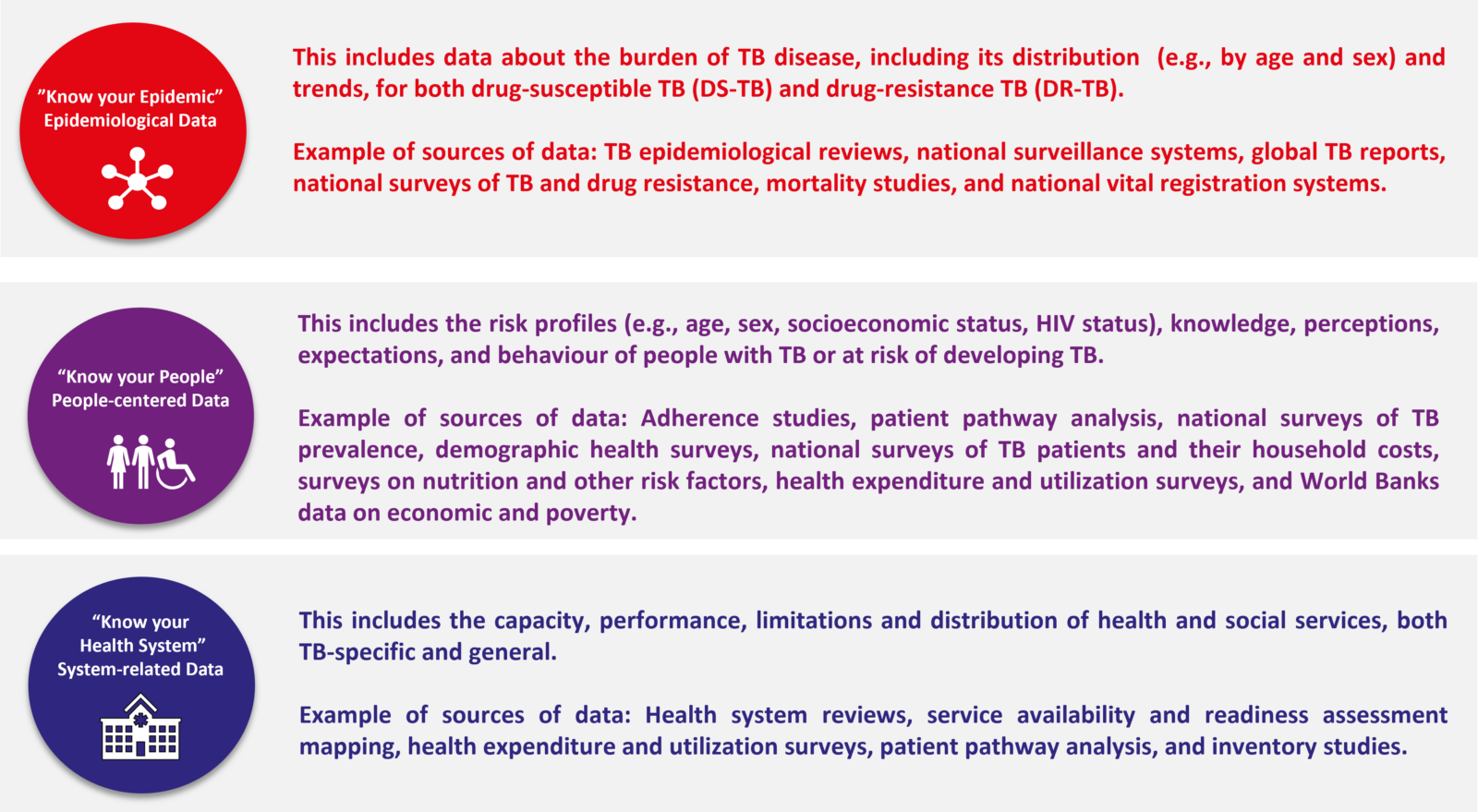Inventorise the data from national and subnational TB and health system surveys, assessments, analysis, and data from surveillance, etc.
Access to data
The data consolidation team should have access to program reports and data from the latest surveys, studies, assessments, and surveillance data including relevant population surveys (e.g. Demographic and Health Surveys, Vulnerability Assessments, etc.) should be available to the NTP´s M&E team. Most high TB burden countries have started using the DHIS-2 platform for their TB notification and treatment outcome data. Access to the data on this platform is critical during the preparatory phase. Also, the team should be familiar with the WHO online TB database which is freely accessible (WHO TB data). Access to Demographic Health Survey (DHS) raw data, which can easily be analysed and visualised using the Patient Pathway Analysis (PPA) wizard, can be secured by obtaining permission from DHS Program (request to access data).
The people-centred framework uses three major types of data.

As illustrated above, some sources may provide more than one type of data. For example, recent national TB prevalence surveys can be used not only to estimate the burden of TB but also to assess the healthcare-seeking behaviour of people with TB or symptoms suggestive of TB; Health Expenditure and Utilization Surveys (HEUS) provides data not only on health service utilization but also on out-of-pocket spending and the healthcare-seeking behaviour of households.
There have been previous efforts to use these three types of data for program planning and decision-making. For example:
- A national TB epidemiological review provides a comprehensive overview of the epidemiology of TB and programmatic situation based on TB surveillance systems and data, national and subnational surveys of TB, and more general health system and non-health data.
- Patient pathway analysis can be used to assess the extent to which patient care-seeking behavior and the availability of TB diagnostic and treatment services are aligned. It also uses three types of data, since it requires data on surveillance, care-seeking behavior, and the availability of diagnostic and treatment services.
- A national survey of costs faced by TB patients and their households (hereafter TB patient cost survey) is used to measure the economic burden on TB patients and their households associated with accessing TB services and staying in care. It requires a situation assessment prior to the implementation of the survey, which includes gathering sufficient information about TB epidemiology, health financing, health insurance programs, health care fee structures, health care delivery models and social protection schemes. The findings from such surveys demonstrate the economic barriers to care, issues related to health and social services, including social protection, and how people with TB cope with economic hardship during and after their illness.
A holistic understanding of the TB situation, from the viewpoints of epidemiology, people and systems, can form the basis for discussions to design and provide integrated health care solutions that meet people’s needs.
Last Update: Friday, December 30, 2022